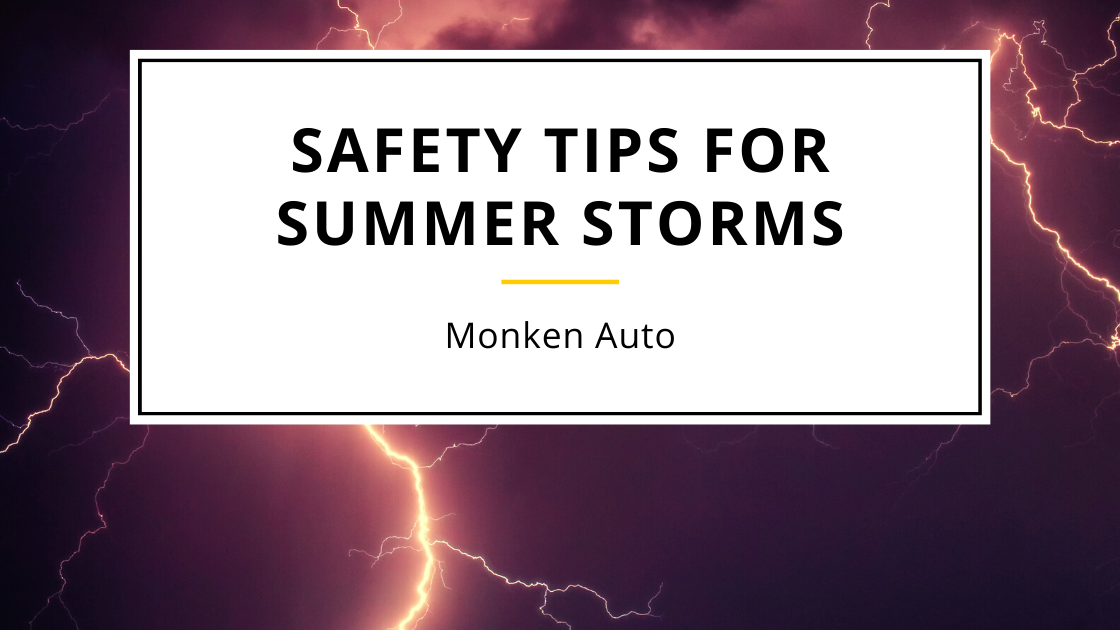
This beautiful weather also brings storms that could be very dangerous. Tornados, hail, and white-out rain storms are prevalent this time of year. We put together some tips on what to do if you find yourself stuck in a storm while you’re in your vehicle.
Tornado Safety If Caught In Your Car
It’s easy to think that your vehicle could easily outrun a tornado, but they can change directions quickly and strong tornado winds are capable of picking up a vehicle and depositing it miles away from where it started.
‘Trying to outrun a tornado in your vehicle is the number one thing to remember not to do. AccuWeather.com Senior Meteorologist, Dave Samuhel, said that trying to outrun a tornado is a bad idea because tornadoes have the potential to travel over 60 mph and they don’t have to follow road patterns. Driving on a 90-degree angle away from the tornado is a good strategy to follow in order to distance yourself from the tornado.
“A compass or GPS may be helpful to determine which way to drive on a 90-degree angle away from the storm,” Samuhel said.
If you see a tornado developing where you are driving, the best thing to do is to pull over and evacuate your vehicle. Seek shelter in the nearest sturdy building or storm shelter; do not hide under your car. The wind could potentially roll your car over. If there is no available shelter, find the nearest ditch or low-lying area and crouch low to the ground covering your head with your arms.
Potentially sturdy structures to look for while driving are fast food restaurants and banks. Fast food restaurants will usually have a cooler that could withstand a tornado similar to a safe in a bank, according to Samuhel. Also, seeking shelter in an interior wall is a good idea.
“The more walls between you and the tornado, the better off you are,” Samuhel said. (excerpt taken from AccuWeather.com).’
Protecting Your Vehicle (and Yourself) During a Hail Storm
Hail storms can be detrimental to your vehicle and your pocketbook. Being prepared ahead of time can help you avoid some significant damage, and even injury.
Obviously, a garage is ideal. If you have a garage that needs to be cleaned out to allow space for your vehicle(s), now is the time to do some spring cleaning! No garage? There are lots of other options:
– Invest in an inexpensive car port
– Purchase a padded car cover – (if you have time before a storm hits, add some blankets or towels underneath the padded cover for added cushion)
– Make sure you receive weather alerts on your phone. Lots of free weather apps offer this service so that you know ahead of time when a hail storm should hit.
– Put those floor mats to use – in a pinch, use floor mats to cover your hood and roof. It won’t protect the entire vehicle but it will help mitigate the damage.
– Use tall buildings as hail shields. If you are caught driving during a hail storm, find the tallest building near you, determine which directions the hail is coming from and park your car on the opposite side as near to the building as possible. Parking on the west side of a tall building during an easterly hail storm will help minimize your hail damage as well.
– If caught driving before a storm hits, try to get into a building before hand, and put those floor mats to work on your while you’re taking shelter inside.
And should your vehicle sustain any hail damage, the
Monken Service Department is here to help you fix any damage you may have sustained.
What To Do When Caught In a Heavy Rain Storm While Driving
Our number one tip for staying safe while driving in a heavy rain storm is to get off the road when visibility is bad. Pull over to a rest area, a store parking lot or to the side of the road in a pinch. Note: If you pull off to the side of the road, be sure to put on your hazards.
If you can get under a gas station overhang, try to. DO NOT park under large trees in the hope of trying to stay dry and avoid damage. Even large trees can topple or lose heavy branches during a heavy enough rain.
During lightning and thunder, do not leave your vehicle unless you can QUICKLY get into a nearby building. If lightning hits your vehicle, the electrical current will travel through the metal cage of your car and into the ground. Note: the electrical current could still affect your car’s electrical system, so be careful not to touch any metal buttons or instruments in your car until the lightning has subsided.
If you notice that the road is starting to flood, turn around. Don’t try to drive through a flooding road – two feet of water can float a car and even a truck.
And to be on the safe side, keep an emergency kit in your car at all times. For tips on what to keep in your emergency car kit, see our post
here.
Tags: hail, tornado
Posted in
safety, service, spring, Storms |
No Comments »









